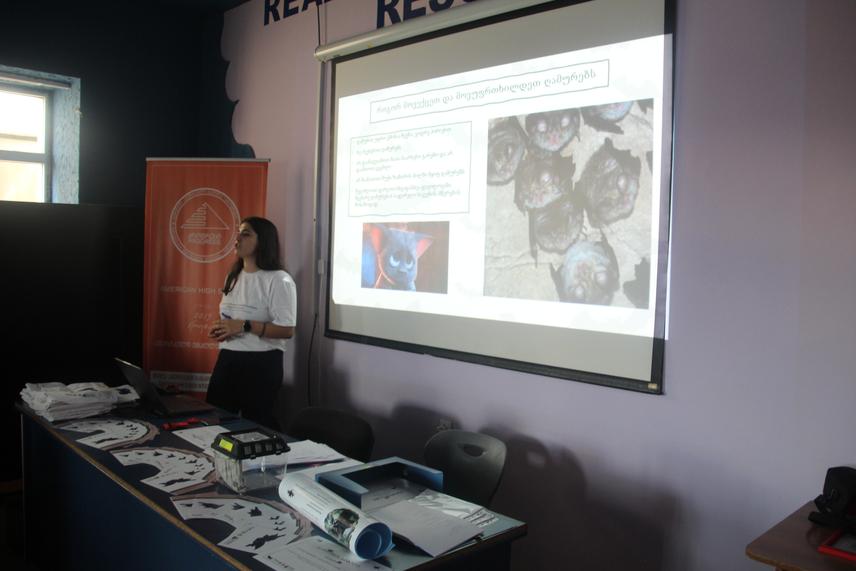Sophio Maglakelidze
Bats, as a diverse group of species, exhibit a fascinating affinity for dwelling in caves, mines, and other subterranean shelters. The rationale behind this preference lies in the stable microclimate provided by such environments throughout the year, offering ideal conditions for hibernation, migration, or maternity roosts while simultaneously safeguarding them from potential predators. Georgia is as a crucial component of the Caucasus biodiversity hotspot.

One of the school lectures. ©Nikoloz Maglakelidze.
Despite its ecological significance, the data about the cave-dwelling bats in Georgia remains notably scarce. Over the years some caves have witnessed assessments of species composition. Regrettably, there is still a big gap in our understanding of the dynamics, conditions, and preferences characterizing bat populations within the known cave-dwelling communities in Georgia.
Bats, acknowledged as integral components of ecosystems, exhibit heightened sensitivity to human-induced disturbances such as urbanization, pollution, agriculture, and vandalism. The region faces an additional challenge in the form of limited education about bats, leading to misconceptions. Consequently, some locals disturb bat roosts and pollute caves, unknowingly jeopardizing the delicate local habitat. Recognizing this critical issue, the importance of raising awareness and educating the local communities becomes evident, underscoring the significance of initiatives like the present project.
Within the borders of Georgia, eight cave-dwelling bat species are protected under various international conventions. IUCN lists five of these species as Least Concern, designates two as vulnerable, and identifies one as near threatened. Furthermore, two of these species are listed on the Georgian Red List. Nevertheless, the existing information on cave-dwelling bats in Georgia demands a more meticulous and well-planned research approach to lay the groundwork for future conservation measures. In essence, the preservation of these unique bat communities depends on an informed understanding of their habitats, behaviours, and the implementation of targeted conservation strategies.
Header: Using an ultrasound detector to determine the species. ©Revaz Kvaratskhelia.